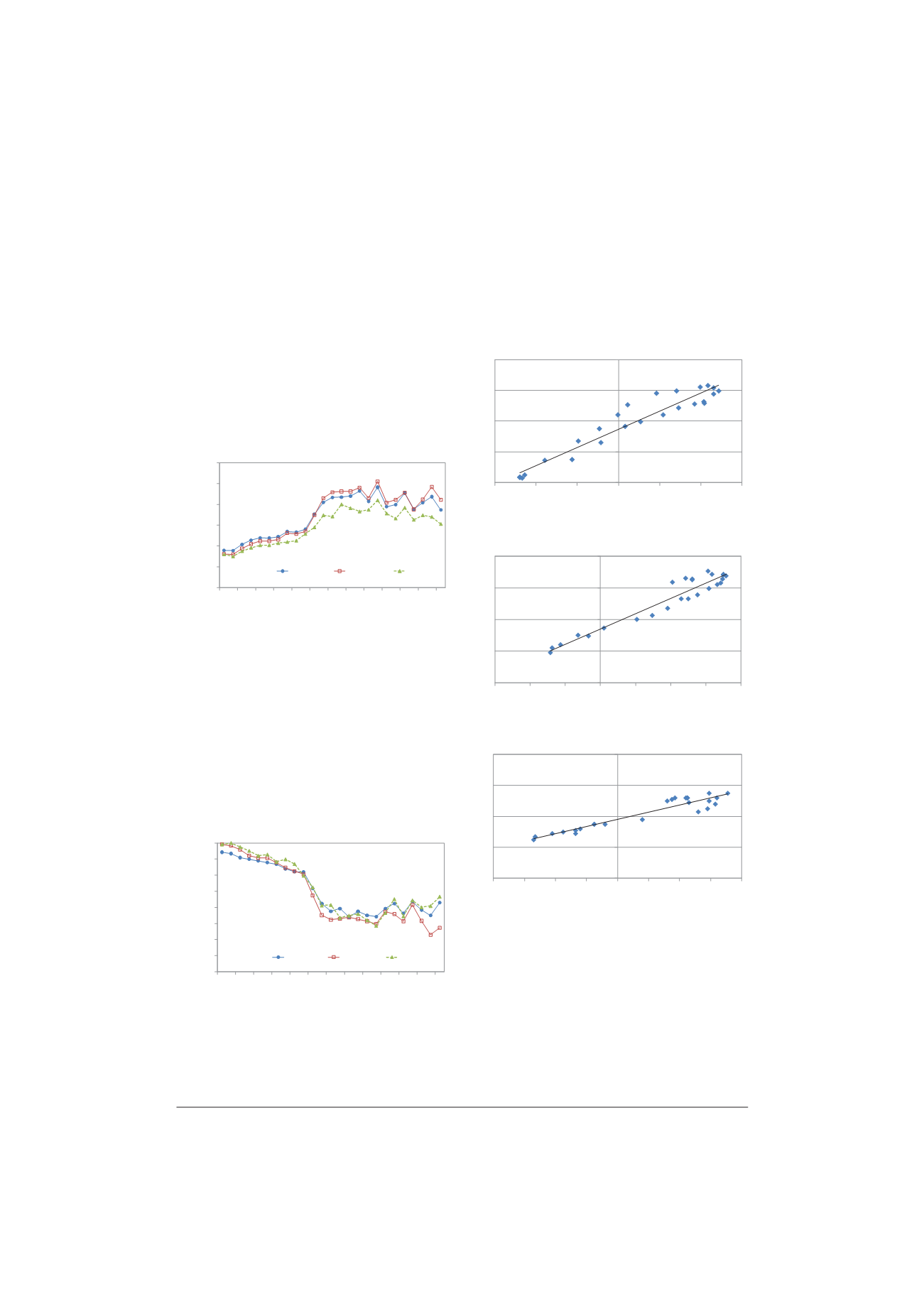
2011 International Conference on Alternative Energy in Developing Countries and Emerging Economies
- 296 -
W/m
2
. Even though the solar radiation in rainy season is
very high, but in fact the sky mostly has the clouds
throughout the day which makes GH temperature lower
than the summer and average RH is higher than other
climates. For the measured soil temperature at 1 m depth
was slightly lower than that in summer by around 0.3 -
0.5
o
C. And sometimes the rainfall might affect the soil
surface temperature.
In Fig. 9, the temperature difference between
temperature of model GH and inflow air was lower than
that in other climate by the range of 0 - 4
o
C. Regarding
the air temperature in the tube, the ETS could decrease
the temperature by a small amount approximately 0 - 2
o
C
during 11 a.m. to 3 p.m. The outflow temperature during
a day was higher than the soil temperature by about 2 - 6
o
C the same as those in winter and summer.
15
20
25
30
35
40
45
6:00AM
7:00AM
8:00AM
9:00AM
10:00AM
11:00AM
12:00PM
1:00PM
2:00PM
3:00PM
4:00PM
5:00PM
6:00PM
Air Temperature
(
o
C)
Time (hr)
modelGH controlGH ambient
Fig. 10. The variation of temperature changes for model GH, control
GH and surrounding in a typical day of rainy season.
In Fig. 10, the maximum temperature occurred at 2.30
p.m. in the model GH, control GH and surrounding,
which were 39.10, 40.50 and 36
o
C respectively. During
cooling time from 11 a.m. to 6 p.m. the ETS could reduce
temperature of Model GH to be lower than the control
GH by the range of 0 - 2
o
C. The results are based on the
variation of solar radiation due to the clouds thus the
accumulative heat is less compared to summer and
winter. And in order to decrease temperature of high
humidity air by 1
o
C, the ETS must remove accumulative
heat more than that of a low humidity.
20
30
40
50
60
70
80
90
100
6:00AM
7:00AM
8:00AM
9:00AM
10:00AM
11:00AM
12:00PM
1:00PM
2:00PM
3:00PM
4:00PM
5:00PM
6:00PM
Relative Humidity
(%)
Time (hr)
modelGH controlGH ambient
Fig. 11. The variation of relative humidity changes for model GH,
control GH and ambient air in a typical day of rainy season.
Fig. 11 shows that RH changes in rainy season for the
model GH, control GH and surrounding were similar. In
the morning, RHs inside and outside GH exceed 90 %
and start to decrease when sunlight rises continuously
until 3 p.m. RHs were at least 50 %. During daytime the
RH of model GH was higher than that of control GH by
approximately 0 - 6 % and close to the atmosphere RH.
D. The Ability of Systems
y = 0.2947x + 3.4682
R² = 0.9183
0
2
4
6
8
-12
-8
-4
0
4
8
12
T
out
- T
s
(
o
C)
T
in
- T
s
(
o
C)
(a) The different temperature between inflow and
outflow air in a typical day of winter
y = 0.241x + 3.3997
R² = 0.9251
0
2
4
6
8
-12
-8
-4
0
4
8
12
16
T
out
- T
s
(
o
C)
T
in
- T
s
(
o
C)
(b) The different temperature between inflow and
outflow air in a typical day of summer
y = 0.2314x + 3.8138
R² = 0.894
0
2
4
6
8
-8
-6
-4
-2
0
2
4
6
8
T
out
- T
s
(
o
C)
T
in
- T
s
(
o
C)
(c) The different temperature between inflow and
outflow air in a typical day of rainy season
Fig. 12. The regressive model of the different temperature between
inflow and outflow air of ETS.
The regression analysis of the ETS was carried out
between the difference of inflow air (T
in
) and soil
temperature (T
s
) as well as the difference of outflow air
(T
out
) and soil temperature beginning at 6 a.m. to 6 p.m.
Characteristics of the regression of 3 climates would be in


